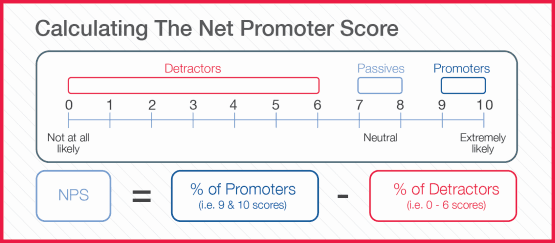Loyalty research is heavily reliant on NPS. It is used by many organisations as a stand-alone measure of performance and as a benchmark by which to compare with competitors.
Further reading: What is the Net Promoter Score?
It’s a relatively simple measure and starts by asking the question:
How likely are you to recommend brand X to a colleague using a scale from 0 to 10 where zero means not at all likely and ten means very likely?
The score is then calculated by taking the percentage of people giving a 9 or 10 (promotors) and subtracting the percentage of people giving a 6 or below (detractors).
Further reading: How can I improve my NPS score?

Given its simplicity, we rarely look past the score to the underlying reasons behind the ratings. However, brand loyalty is not only driven by external factors such as price and product but also by emotions and brain activation on a much deeper level. It is this deeper level of insight that a neuromarketing perspective can provide.
Further reading: What is a good NPS score?
In a recent article for Quirk’s Magazine, Research Executive Ceri-Ann Hughes explains how NPS can be improved by taking a neuromarketing perspective, explaining how the new measures of loyalty assessment work and the depth of insight it provides.
To read the full article and learn more about NPS and neuromarketing, please click here or on the link below.


